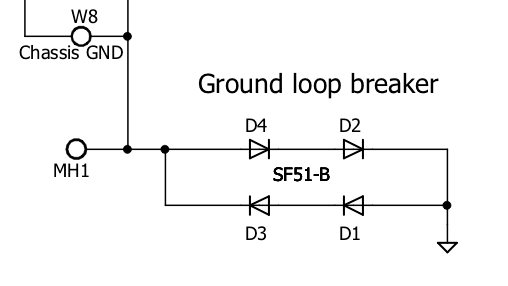Grounding is a catch-all label for a number of different topics, which IMHO is confusing. The topics are:
- Electrical safety;
- EMI protection;
- Current routing (especially power currents, e.g. power supply or speaker connection);
- Correct signal reference points (a.k.a. "signal grounds").
Electrical safety requires that any exposed metal part stays at a safe potential vs. earth even if insulation fails. There are two ways to do it:
- Connect all such parts to safety ground (e.g. the middle pin on your IEC C14 inlet) - hence grounding;
- Use double insulation.
If you go the first way, you can connect all exposed parts to safety earth in several ways:
- Directly;
- Through a NTC thermistor. Normally, it provides some isolation of your circuit from safety earth, but in case of isolation fault, the fault current flows through the thermistors, heats it up, and lowers its impedance;
- Through a couple of beefy anti-parallel diodes. Diodes do not conduct current unless there is voltage applied across them, thus isolating your circuit until a fault occurs. You can use a 25 Amp bridge rectifier, connect together its "Plus" and "Minus" terminals, then connect one of the AC terminals to the safety pin on your IEC C13 mains connector, the other AC terminal to your circuit's ground.
If you go for double insulation, you need to provide it everywhere where the main voltage is present - including the power transformer(s). Double insulation can be:
- Two separate layers of insulating material (that includes the isolation of your transformer's primary);
- One layer of insulating material plus 1/8inch (3mm) of air;
- 1/4inch (6mm) of air.
Always check your local electrical codes to make sure your device is compliant.
I'll talk about other grounding topics in my next blog posts.
